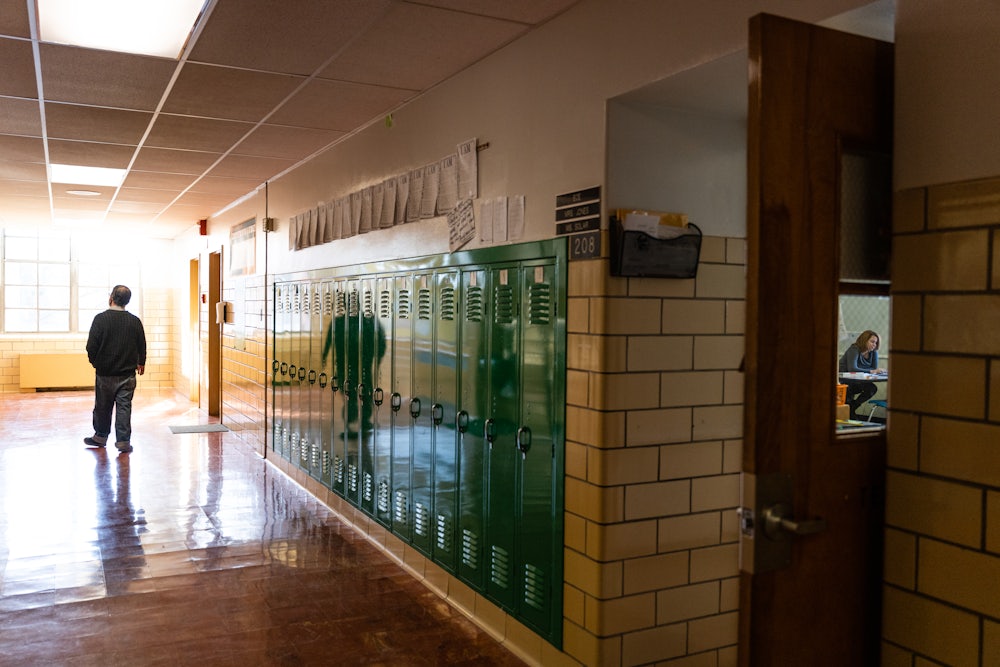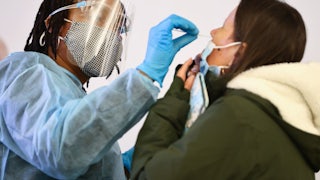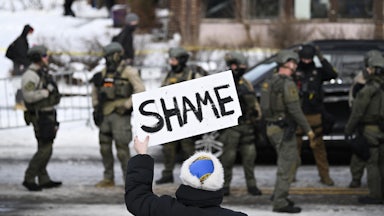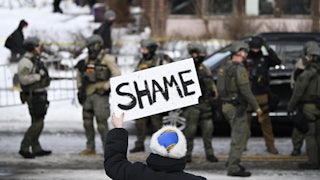I’m one of the millions of parents struggling with ad hoc childcare challenges as a result of pandemic-related school closure.
I’m also an epidemiologist and former city health director. I’ve spent my career dissecting and making difficult public health decisions, like those currently being made at school districts across the country. And yet I am flabbergasted that, entering year three of this pandemic, we’re still failing to provide basic, pandemic-fighting tools like tests, masks, and so on to teachers and school staff.
The narrative we keep hearing about school closures—a battle between teachers and parents over the safety of schools in the midst of an omicron surge—is missing the most important issue at the heart of this: the shortage of the very things that kept kids safe in schools prior to this surge.
Kids need to be in school. Full stop. The evidence has shown that school closures have left students about five months behind in mathematics and four months behind in reading. The consequences have been most profound among the most marginalized children. In majority-Black schools, there was a six-month learning loss. But the consequences haven’t been limited to learning loss. School closures during the pandemic have accentuated the mental health impact of the pandemic on children. A growing proportion of children are experiencing worsening mental health. Adolescent suicidal ideation has increased.
But here’s the thing: Nobody disagrees that kids need to be in school. Parents want their kids to go. And teachers want to teach them there. The issue is how to keep everyone safe while they’re there.
Indeed, the evidence suggests that schools and classrooms have been relatively Covid-safe. The Centers for Disease Control and Prevention recommendations for school safety include universal masking for children over the age of two and regular testing in the classroom, including test-to-stay, which allows children who test negative after exposure to stay in the classroom. One study of 90,000 students and teachers where rigorous containment protocols, including universal masking, were followed, in North Carolina, found that transmission in schools was vastly lower than in the community. Another study of test-to-stay policies for children who were exposed through a mask preserved an additional 8,152 in-school learning days for students in Lake County, Illinois. Indeed, with rigorous masking and testing, school can be safe.
All of this evidence, of course, comes from before the omicron surge. Omicron has changed the calculus in two ways. First, it’s far more transmissible than the previous variants that were spreading while the available evidence was being collected. It’s better at finding the seams between our Covid prevention efforts, kind of like the way bitter cold seems to penetrate even your warmest winter coat. That just stresses the need for abundant quality masks and testing. To make matters worse, mass transmission of omicron has put a crunch on the availability of those very things. Indeed, the standoff between the Chicago Public Schools and its teachers’ union resolved largely over testing guarantees. Across the country, school districts are facing similar challenges.
The second issue is that omicron spreads so rapidly at any given time that 10 to 15 percent of teachers across school districts are reporting ill. In lower-income communities, the ratio of students to each staff member is already woefully high. This makes it far worse. Add that to the burden of administrating contact tracing and testing—so critical for test-to-stay to work—and you have a wicked challenge indeed. So while it’s easy to frame this debate as a simple conflict between teachers and parents, it’s actually more about our society’s commitment to keeping kids in schools in the first place.
During her testimony in front of the Senate on Tuesday, CDC Director Rochelle Walensky said, “Schools should be the first places to open and the last places to close.” Yes, of course. But what are we doing to make that possible? The fact that there’s a run on testing two years into this pandemic is bad enough. But what’s even more unconscionable is that there hasn’t been a concerted effort to protect enough of our supply of everything from masks to tests for schools around the country.
When we say that schools are a priority, that has to translate into policy change. It should mean that when resources are limited, our priority institutions come first. But it hasn’t, which leaves too many kids coming last. Teachers aren’t simply public employees who educate our children. Often parents themselves, they’re also advocates for our kids. When they speak up about their concerns over the circumstances in our schools, we ought to listen.
Last month, a video made the rounds of South Dakota teachers scrambling in a “dash for cash” competition for cash to buy school supplies for their classrooms. It was roundly and rightly criticized. After all, here were public employees made to scrounge on their hands and knees for cash to buy supplies to teach our kids. As omicron presses on and schools face acute shortages of the supplies they need to keep our kids safe, we’re now forcing teachers to do the same over Covid protections. It’s just as shameful.








